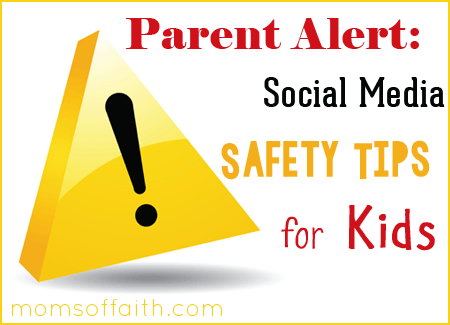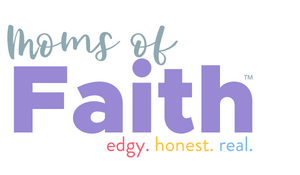Parent Alert: Social Media Safety Tips for Kids
The world is so different from when I was a kid. Technology is everywhere–constantly progressing, and social media is a huge factor in society. Unfortunately, it can be tedious to prepare our kids for the craziness of social media, and set important boundaries. We must take the time to teach our children safety tips, set guidelines, and discuss what appropriate online behavior is.
Basic Safety tips for any social media site
– Create strong passwords with numbers, special characters, upper and lower case letters. The longer the password, the better–and passwords should be changed often.
– Disable location information on cell phones and on web based sites under “Settings” or “Profile” in the person’s account.
– Go over profile and privacy settings and make changes. It’s wise to keep age, birthday, full names, location, and phone numbers hidden/not visible.
– Think before sharing online. Everyone has their own comfort/privacy level. It’s important your child knows what can be shared online, and what is considered too much information.
– Only friend people your child knows personally, and has met.
– Have a voice. If a friend posts a photo of your child and it makes them uncomfortable, your child should ask their friend to take it down. It goes both ways, so your child should respect their friends’ wishes if something makes them uncomfortable.
– Be vigilant when it comes to unknown links. If it doesn’t “sound” like your friend, don’t click on it.
– Keep a notebook with updated usernames and passwords for parents.
There is no such thing as safe social media sites. Some may be safer than others, but the only way to be secure is to teach your kids safety practices, what to look out for, and you MUST monitor them. You can’t control what other people do with their privacy settings, but you can control what you do with yours–and safety is always of paramount importance on all online sites.
7 Popular Social Media Sites and Safety Tips
Make sure that you check out the terms of service for each site you let your kids participate in. Some are only for kids over 13. It is not their job to monitor this–it’s yours.
Also, never ever, ever allow kids to be on social media in a private setting. It is a smart idea to keep computers out in the open in a common area, and make sure you have access to what they are doing, seeing, and participating in online.
Parents should always be friends with their child. No exceptions. If they don’t like it, well, they don’t need to have an account. Period. This goes for ALL social media sites. I do not negotiate.
When you allow apps to be installed, take the time to change the permission settings. Most will require having your basic information, but you can disallow the app to post on your behalf, or from sending updates and notifications.
1. Facebook
Facebook goes through many changes, and most times, without people knowing. When new features are added, the default settings become public, or your privacy settings get reset. Facebook also makes you jump through hoops as changing the settings is not as simple as it should be. Because kids don’t pay attention to these things, it’s easy for their privacy to be compromised. The parents must be on top of things to make sure their child is safe.
– Before your child is allowed to have FB, it should be agreed upon that parents can see everything, and that means not hiding things from parents. A good rule for kids to go by is if they don’t think their parents will approve, then don’t post it and don’t share it.
– Share with only your friends.
2. Twitter
The safest way to be on Twitter is to protect your tweets from the public. People who want to connect with your child will have to send a request and get approval first. Again, your child should only approve people they personally know. Full name isn’t necessary, and they should use a handle instead of their real name, or use their first name only.
3. Tumblr
Again, as with any profile, little information as possible is best. First name or nickname, and a photo other than yourself. There is lots of adult content and it isn’t a good place for tweens and teens.
4. Google+
Once an adult social media site, Google+ now offers some safety features for kids. Circles can be created for specific people, and your kids have control of who sees what. For instance, in a video chat, if an outsider from a circle enters, the chat is temporarily muted and a notification will appear. A child has the option to rejoin or exit the chat. Another example is if your child’s post is shared with their extended circles, they are reminded who can see the post and comment. By default, others can comment on your child’s post if they are in the same circle. If your child posts a photo in their family circle, only people in the family circle can see and comment.
5. Ask.fm
This site is simple where anyone can ask questions and you answer. I don’t recommend it for kids because it’s a platform for cyber bullying. There are many young kids on Ask.fm, it’s not a place for a child to be on because of the enormous amount of anonymity, and trolls who get a kick out of being mean.
6. Instagram
It’s a popular site for many and not just for kids, but like Twitter, you can set your privacy settings that only your friends can see your photos.
7. Pinterest
This can be a fun site! Unfortunately, I have personally run across completely nude pictures in categories you would never thought they would be in. Yes, Pinterest takes them down asap, however, they can and do still slip through. So, as with ALL social media sites, monitor!
This is one of those topics that is only going to get more and more prominent. Make sure that you are being diligent and paying attention to what your kids are doing. Even the best kids make mistakes and can be taken advantage of! Never let your guard down when it comes to the safety of your children and social media!
Copyright © Moms of Faith, All Rights Reserved


The only child who is allowed on social media is my 13 year old. He is only allowed on KIK, IG, and facebook but I have the password to his phone and all his accounts at all times. I’ve done a few random checks occasionally as well to make sure he’s using them as we discussed too.
It’s hard enough to keep track of it for ourselves, but it’s even more important to be vigilant and aware so as to keep our kids safe!
I actually use a program called KeePass that stores and generates passwords – it makes really long, complicated passwords, which really helps with security. I wish more adults took the “Think before sharing” advice too, LOL!
Great tip! I like Beeb’s program that makes strong passwords. I am going to look into that.
We restrict what our kids get on but we know there are still cracks in that process. Our oldest trades Pokemon on her DS and it drives me crazy because I don’t know anything about the filters on that thing. She is old enough to understand how serious I am when I say not to share personal information online. Not name, city, school, nothing!